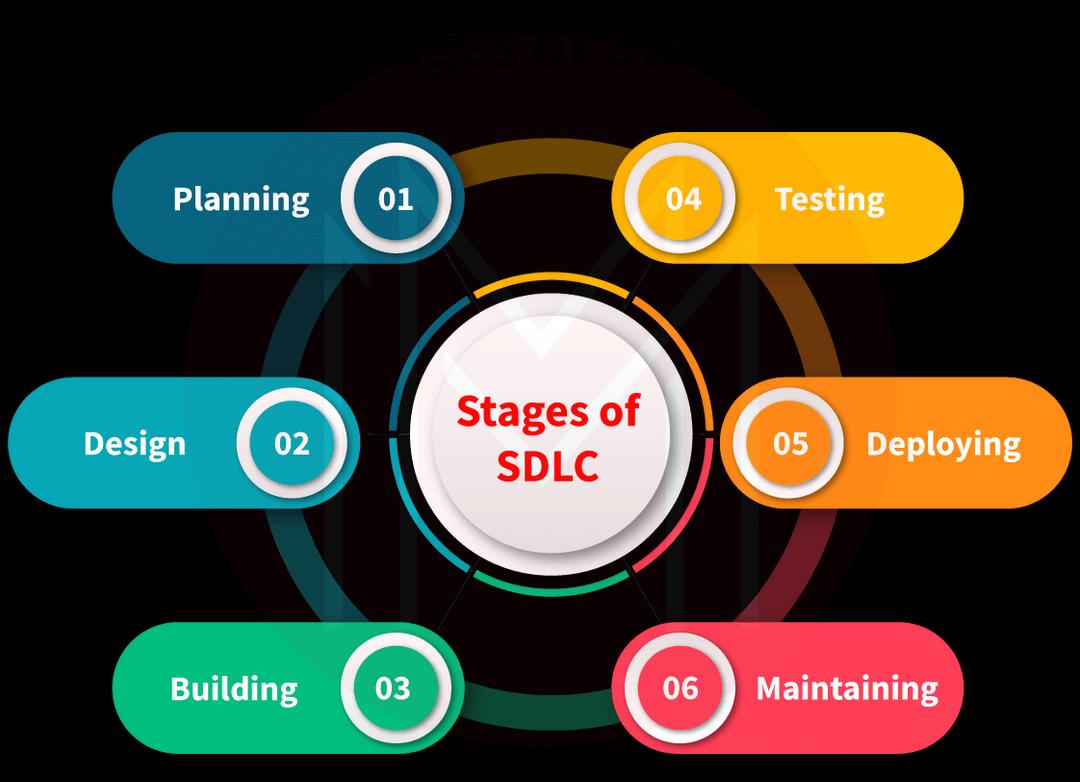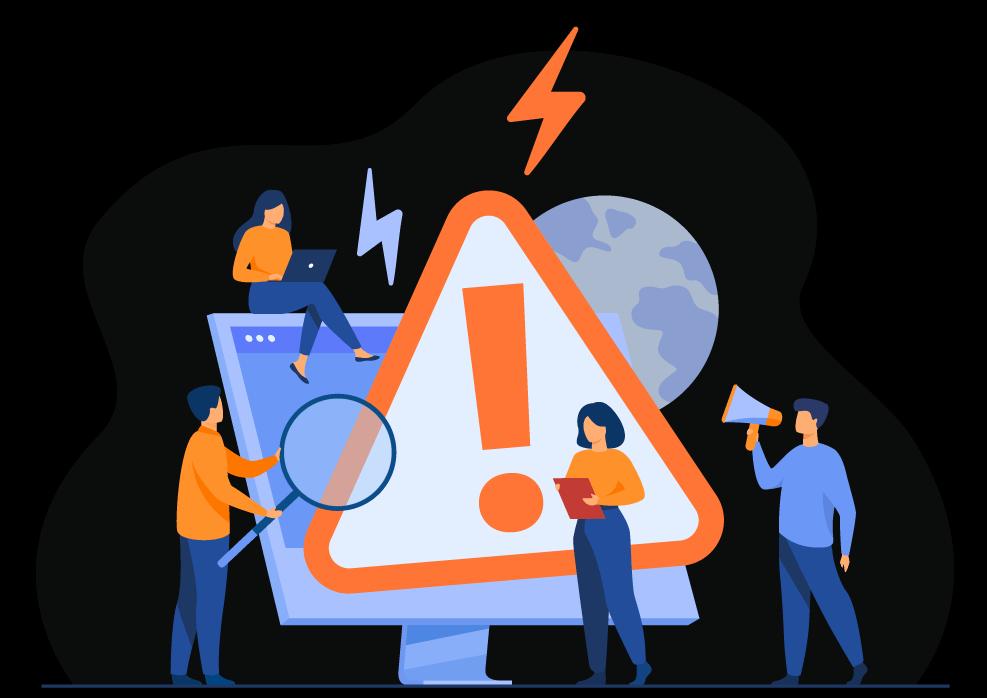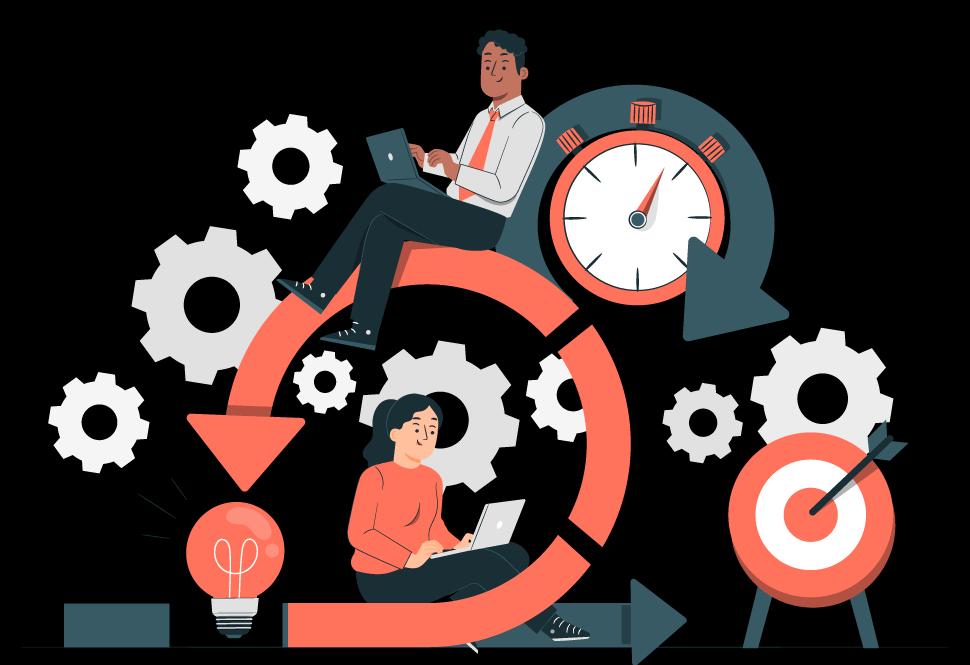- Home
- Blog
- Agile & Scrum
- SDLC vs Agile

- Agile Interview Questions and Answers
- Agile Metrics That Matter
- Agile Project Management
- Agile Certifications
- Agile Project Management with Scrum
- Agile vs Scrum
- Difference Between Lean and Agile
- Top Agile Project Management Tools
- Benefits of CSPO Certification
- Principles of Scrum
- What is Extreme Programming - XP Practices
- test article
In an information technology organisation, a process called the SDLC (Software Development Life Cycle) is applied to software or system developments. Several steps or processes in software development are described by the SDLC framework. Application Development Life Cycle (ADDLC) is another name for the Software Development Life Cycle (SDLC) (SDLC). The phases of the software development life cycle are planning analysis, design, implementation, and maintenance. To specify the scope and lifetime process of hardware or software components or configurations, the software development life cycle process can be used. The SDLC makes sure that customers get effective and high-quality hardware or software. This will ensure that the firms run effectively.
While the Software Development Life Cycle (SDLC) is a project management process, Agile is a technique for carrying out the SDLC. Agile software development is a method for approaching the software development lifecycle process in which the needs and solutions of many cross-functional teams and the end users, customers, or clients are satisfied through a collaborative effort. It makes quick alterations and speedy development possible as well as continual project deliverables and ongoing project improvements. Beginning in 2001, a draught of the Agile Manifesto was created. Agile was later adopted after it was initially created as a formal process.
| SDLC vs Agile - Tables of Content |
What is SDLC?
The software Development Life Cycle is referred to as SDLC. There are steps that should be taken when developing software. Every firm that develops software adheres to the software development life cycle (SDLC). The SDLC has several phases. In the planning stage, the problem is recognized with a fundamental understanding. The project's risks, technical challenges, available resources, and development efforts are all discovered during this phase.
The initial task during the requirement phase is to collect and analyze requirements. In requirement gathering, feedback from customers, meetings with senior managers, and information on sales and marketing all take place. The requirements should be carefully documented. The Software Requirement Specification is the name given to this document (SRS). It includes the specifications for the product that must be created throughout the course of the project.
The SRS serves as the basis for the software design. In a Design Document Specification, multiple design approaches for the product architecture are suggested and listed (DDS). All of the architectural modules, the data flow representation with external modules, etc., are designed during this phase.
Utilizing the appropriate programming language, the project is implemented. The applications can be written and tested using a variety of programming tools, including debuggers, code editors, compilers, and interpreters. The application can influence the programming language choice. This step includes the developed module's unit testing.
Verifying and validating that a software program performs as expected is the process of testing. It is used to determine whether the completed project meets the required standards. Testing includes system testing, integration testing, etc. To do testing between two modules is known as integration. The entire project is tested during the system testing.

| If you want to become an Agile Certified Specialist, then visit Mindmajix - A Global online training platform: “Agile Training”. This course will help you to achieve excellence in this domain. |
Benefits of SDLC
The following benefits come from applying the SDLC cycle in a software development environment:
- This model is among the simplest, most widely used, most manageable ones.
- Due to the nature of the project, each phase has its own deliverables and review procedure.
- Small to medium-sized projects with clearly stated and comprehensible needs are a good fit for it.
- Planning and implementation take place in opposite directions (forward and backward).
- There is much documentation on the procedure and outcomes.
- In the SDLC, processes, tasks, and outcomes are thoroughly documented.
- During the software testing phase, the Software Requirement Specification document contains sufficient detail for the Software Testers to build and simulate test cases and scenarios. The SDLC technique as a result makes testing considerably simpler and more visible.
Limitations of SDLC
Some of the drawbacks of using the SDLC in software development are listed below:
- The best model for a significant, intricate, and continuous undertaking is not this one.
- If the initial requirement is not clear, it is less effective.
- It is exceedingly challenging to make modifications in the earlier phases.
- Testing starts once development is complete. As a result, it is probable to find issues later in the development process that will be expensive to rectify.
- Even throughout the development phase, this paradigm does not allow for much flexibility.
- Even throughout the development phase, this paradigm does not allow for much flexibility.
- Large updates can occasionally cost extra because testing is frequently postponed until it is complete.
- We face a significant risk of ambiguity and risk since problems might not be discovered until the project is almost finished.

| Related Article - SDLC Interview Questions and Answers |
What is Agile?
A software development life cycle model should be followed throughout the software development process. The Software Development Process Model refers to these models. To effectively finish the software project, each process adheres to a specific number of steps that are specific to its nature. The waterfall model, iterative model, spiral model, v model, prototype model, rapid application development, etc. are some examples of SDLC models.
The SDLC model includes the agile technique. It combines incremental and iterative process models. This model aids in adapting to shifting requirements. The project is divided into a number of parts according to this model. Assume that the project is divided into A, B, and C-sized modules. Planning, requirement collecting and analysis, designing, implementing, and testing are covered in the first module A. After it is finished, the B module begins. Like module A, it goes through the same phase. B is completed before module C begins. The customer can receive a functional module at the conclusion of the iteration.
Agile offers a variety of benefits. Once the criteria are established under the conventional waterfall paradigm, they cannot be modified. The requirements can be altered in Agile, though. The developer and the client work together more frequently now. The project is easier to manage and teamwork is enhanced. Agile is a well-liked SDLC approach overall because of its adaptability and flexibility. A complicated project might not be appropriate for it. The customer's constant ability to alter the project's requirements and the demand for an agile project manager is further downsides.

Benefits of Agile
The advantages of employing the Agile development process are listed below.
- This method of software development is quite practical.
- Cross-training and teamwork are encouraged.
- Rapid development and demonstration of functionality are possible.
- There is a base amount of resources needed.
- accommodating a variety of needs, both fixed and changeable
- As soon as possible, offers incompletely functional solutions.
- a paradigm that works well in dynamic contexts.
- No or very little planning is necessary.
Limitations of Agile
The Agile model's limitations are listed below.
- This approach cannot handle complex dependencies.
- Sustainability, maintainability, and extensibility are all seriously at risk.
- To be successful, it requires a comprehensive plan, an agile leader, and an agile PM methodology.
- The scope, functionality, and revisions needed to meet deadlines are decided upon through a stringent delivery management procedure.
- When the customer is unclear, the team may be led in the wrong way.
- There is an extremely high degree of individual dependency as a result of the lack of documentation.
- It could be challenging to teach new team members how to use the technology due to a lack of documentation.
| Related Article - Agile Interview Questions and Answers |
Difference between Agile and SDLC
Between the SDLC and agile software development life cycles, there are a number of distinctions. Various variations include
- Methodology: Agile developers can alter their path in accordance with the tasks that the scrum masters set them, whereas SDLC follows a path where no stage can be skipped.
- Timing Agile users make use of the time allotted to their sprints, whereas SDLC uses many phases with unknown durations.
- Changes: When using agile development methods, developers have the freedom to make changes after their initial release after gathering feedback from various stakeholders including scrum masters, customers, and project owners. This is in contrast to SDLC, which forbids changes after the release of the final product.
- Testing: Testing is only done when development is complete when utilizing the SDLC, but when adopting agile, developers can perform testing at various stages of the development process.
- User focus: While agile makes sure that users are involved through user stories and testing, SDLC prioritizes users.
- Budget: When using the SDLC, the company spends a lot since testing is done at the conclusion of the project, whereas agile uses less money because testing is done frequently.
- Project size: In contrast to agile, which focuses on releasing projects more quickly to the market, SDLC works effectively for the majority of projects regardless of scale.
- Flexibility: Agile enables flexibility for the entire team, whereas SDLC supports flexibility depending on the SDLC approach you choose.
Key Difference Between SDLC and Agile
- While Agile is a methodology that can be implemented by using the Scrum framework for the purpose of the project management process, SDLC (Software Development Life Cycle) is the process that is being followed for the design and development of a product or service to be delivered to the customer in information technology or hardware organizations.
- Different models for the SDLC exist, including the Waterfall model, the Agile model, the Iterative or Incremental model, the Spiral model, the Rapid Application Development (RAD) model, the V-Shaped model, and the Evolutionary prototype model. Agile contains a set of best engineering practices and standards, and it also helps organizations save money by increasing predictability, lowering failure rates, and raising the quality of projects that are delivered.
- The SDLC includes HLD (High-Level Design) and LLD (Low-Level Design), which are used to analyze and explain the project in a high-level and low-level perspective to various team members and clients, depending on the technical or business understanding of the individual. In contrast, the Agile model has various phases, including planning, analysis, requirements, design, coding, unit testing, system integration testing, non-functional testing, and acceptance testing.
- While Agile is simpler and easier to grasp, apply, and implement, SDLC will be easier to know or glance at in order to quickly understand the project.
- Agile is simpler to manage and more adaptable for the developers and the complete team than SDLC, which has various models, and controlling the sections of the project depends on the model.
- The SDLC outlines all the steps that must be taken to complete a project successfully, as well as its maintenance and support, whereas the Agile Manifesto lists up to 12 separate principles.
- Agile has a speedier development strategy and accelerates the development process in an effective and efficient way, while SDLC offers a methodical approach to producing software towards successful product deliveries within the timetables.
- While Agile offers a continuous integration and continuous delivery model by delivering small changes in applications based on the requirements with frequent deliverables as per the dynamic requirement changes, SDLC contains documentation that will be documented at each and every stage in detail to make clear progress visibility.
SDLC vs Agile Comparison
|
SDLC |
Agile | |
|
Definition |
A process called SDLC (Software Development Lifecycle) is used to efficiently manage projects. |
The methodology and strategy utilized in an SDLC process for software project development are iterative. |
|
Usage |
It is employed to effectively produce high-quality items. |
It is applied as an incremental development strategy to create high-quality software. |
|
Project Size |
Any project of any size can use it. |
Smaller tasks are best served by it. |
|
Managing |
Depending on the methods used, yes. |
An Agile methodology makes management simpler. |
|
Flexibility |
Whether a waterfall, Agile, or Unified model is used depending on the technique. |
It is adaptable for both the developers and the whole team. |
|
Stages |
The development process is divided into various phases. |
Its model or methodology for development will go through many stages. |
|
Approach |
Different methodologies have been used in it. |
It approaches its evolution with realism. |
|
Platform |
It facilitates the development of any form of product or software programme. |
It supports all product types by breaking up into incremental builds. |
|
Changes |
After the project's inception, large alterations are not permitted. |
It enables quick adjustments after the project's inception or during the project period, which will meet changing requirements. |
SDLC vs Agile FAQs
1. Which methodology is SDLC?
SDLC stands for Software Development Life Cycle, which is a methodology used in software engineering to guide the development of software products. It includes phases such as planning, analysis, design, implementation, testing, deployment, and maintenance.
2. Is Agile an SDLC?
Agile is a type of SDLC that focuses on delivering working software in small, frequent releases with a strong emphasis on collaboration, flexibility, and customer satisfaction.
3. What are the 3 advantages of agile methods?
The advantages of agile methods are increased flexibility, improved collaboration, and early delivery of working software.
4. Which methodology is best for Agile?
Scrum is the most widely used agile methodology, but there are other popular ones, such as Kanban, Lean, and XP, and the choice depends on the specific needs of the project and organization.
5. Is SDLC good for a career path?
Yes, knowledge and expertise in SDLC can be beneficial for a career in software development or related fields, as it helps in planning and executing projects, communication, and ensuring quality, and is a valuable skill to have on a resume.
6. Is SDLC stressful?
The stress level associated with SDLC can vary depending on the project and individual circumstances, but effective planning, communication, and problem-solving can help mitigate stress.
7. Why Agile model is best in SDLC?
Agile is considered the best model in SDLC due to its flexibility, customer satisfaction, collaboration, continuous improvement, and faster time-to-market.
8. What is the role of Agile?
Agile plays a critical role in the software development process by providing a framework for managing complex projects and delivering high-quality software that meets customer needs. The key roles in Agile include the product owner, scrum master, and development team, who work together to ensure effective communication, collaboration, and continuous improvement.
9. Is it easy to learn Agile?
Agile is generally considered to be relatively easy to learn due to its straightforward principles and practices, but becoming an expert and implementing it effectively in complex projects may require more time and experience. There are many resources available to help individuals and teams learn and adopt Agile practices more easily.
Conclusion
Agile is a methodology, although SDLC is a process, hence both SDLC and Agile must be considered when SDLC includes different methods, of which Agile is one. Different techniques for the SDLC exist, including Agile, Waterfall, Unified model, the V model, and the Spiral model. The project's requirements and scale influence the technique choice, and the STLC, also known as the Software Testing Life Cycle, can use the same methodology.
The agile paradigm mostly aids smaller projects in producing high-quality projects quickly and affordably. Agile has various phases compared to other techniques, while SDLC has different phases that might vary depending on the methodology. The project's needs, team size, complexity, and scale all affect the methodology that is used.
If you want to enrich your career and become a professional in Project Management and Methodologies Courses, then enroll in "Agile Training" - This course will help you to achieve excellence in this domain.
 On-Job Support Service
On-Job Support Service
Online Work Support for your on-job roles.

Our work-support plans provide precise options as per your project tasks. Whether you are a newbie or an experienced professional seeking assistance in completing project tasks, we are here with the following plans to meet your custom needs:
- Pay Per Hour
- Pay Per Week
- Monthly
| Name | Dates | |
|---|---|---|
| Agile Training | Dec 13 to Dec 28 | View Details |
| Agile Training | Dec 16 to Dec 31 | View Details |
| Agile Training | Dec 20 to Jan 04 | View Details |
| Agile Training | Dec 23 to Jan 07 | View Details |

Madhuri is a Senior Content Creator at MindMajix. She has written about a range of different topics on various technologies, which include, Splunk, Tensorflow, Selenium, and CEH. She spends most of her time researching on technology, and startups. Connect with her via LinkedIn and Twitter .













